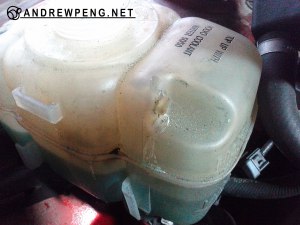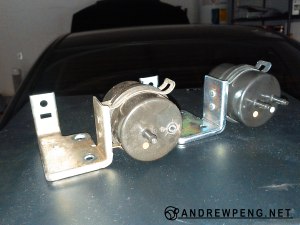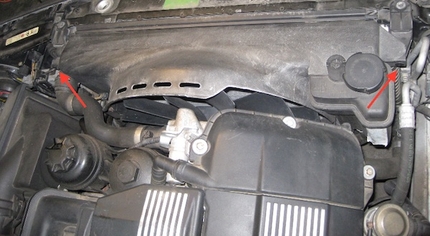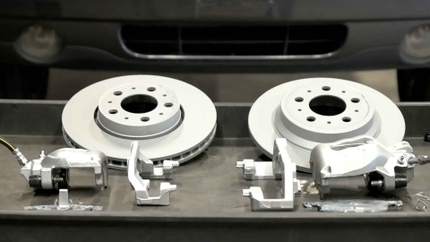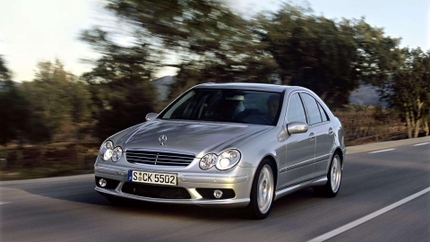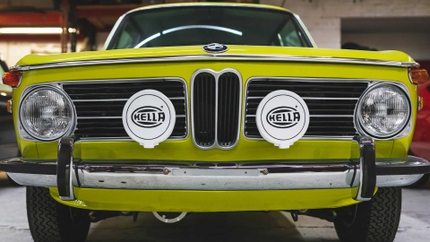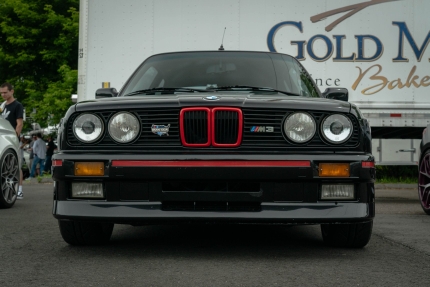There are distinct advantages and characteristics to driving a Volvo. The solidly built chassis, high level of craftsmanship and build quality, and the clean design and function of the car always brings a smile to my face when I get in my XC90.
Having owned this car for a few years has shown me a new side of maintaining and repairing European cars that has left me scratching my head despite the qualities and traits of European vehicles. These wonderful creations of craftsmanship somehow seem to be assembled of the worst quality, brittle, weak plastic that just crumbles and disintegrates. What's more frightening - more and more previously metal components of the engine bay are giving way to lightweight "composite". Coolant tanks, master cylinders, and intake manifolds are invading applications previously dominated by metals all in the quest to cut costs and save weight.
Take for example, this coolant expansion tank on my Volvo XC90. At about 97k miles, considered a mileage at which a Volvo is "just done getting broken in" for many older Volvo models - this coolant tank decided to crack and send coolant into a fountain into my engine bay. I don't think I could even say the Volvo engineers didn't see this coming - the nipple of the tank was already reinforced with a metal sleeve. A replacement was quickly ordered and installed - though this time I rolled the dice and bought an aftermarket tank in hopes their particular blend of plastic would last longer than Volvo's.
300 miles before this particular incident, I noticed the engine bay was making a hissing noise at idle. Closer inspection revealed a cracked and broken vacuum tank that was used to control the variable length intake runners - a broken nipple had caused a minor intake leak, preventing the variable intake manifold system from operating. Luckily I caught this leak early enough to prevent a check-engine light from illuminating. However, this time I had no choice but to order a genuine Volvo replacement part.
This discouraging issue isn't limited to tanks and hoses - even the plastic wire wrap used to shield the wires in the engine bay appear to be crumbling at the slightest touch. Part of it I can attribute to the brutal Texas heat, but a part of me can't accept that as an excuse when my two other Subarus have plastic engine components that hold up far better than the Volvo's when exposed to the same environments.
A look around at modern European cars shows this as a growing epidemic. Many late model BMWs have plastic intake manifolds and plastic oil pans. Component mounts, fluid reservoirs, and radiator end tanks have transitioned to polymer or partially polymer construction. Many components can't withstand the combination 1-2 punch of high heat and time in the engine bay. Instead of melting or deforming from the heat, the plastics tend to harden and become so brittle that light impact causes the component to shatter and break apart. Factory-trained and certified technicians often can't disassemble the engine bay without breaking or damaging a few pieces in the way.
Admittedly, with cars getting filled up with more and more electronics and features (and late model European care are no exception) - modern cars need to find somewhere to cut costs for the manufacturer to remain profitable and competitive in the ever expanding car market. Federal fuel efficiency standards and high fuel prices also contribute to the desire to shave weight and increase fuel economy. Composites and polymers certainly help attain those goals, but at the cost of making cars more brittle and fragile, and more difficult to work on.
How have your experiences with working and dealing with plastic automotive components been?
About the Author: Andrew Peng
 Andrew is an aerospace engineer and car fanatic that enjoys working on his garage of Volvos and Subarus. When he's not busy attending car meets and shows or taking things apart, he enjoys driving his cars and finding interesting new ways to break them. He can be reached via his personal website at http://andrewpeng.net, Facebook, Google+, Instagram, or Twitter.
Andrew is an aerospace engineer and car fanatic that enjoys working on his garage of Volvos and Subarus. When he's not busy attending car meets and shows or taking things apart, he enjoys driving his cars and finding interesting new ways to break them. He can be reached via his personal website at http://andrewpeng.net, Facebook, Google+, Instagram, or Twitter.


